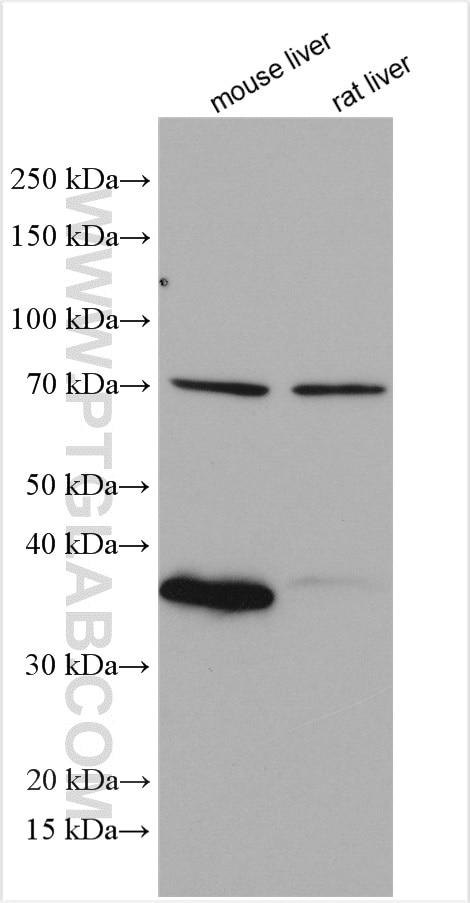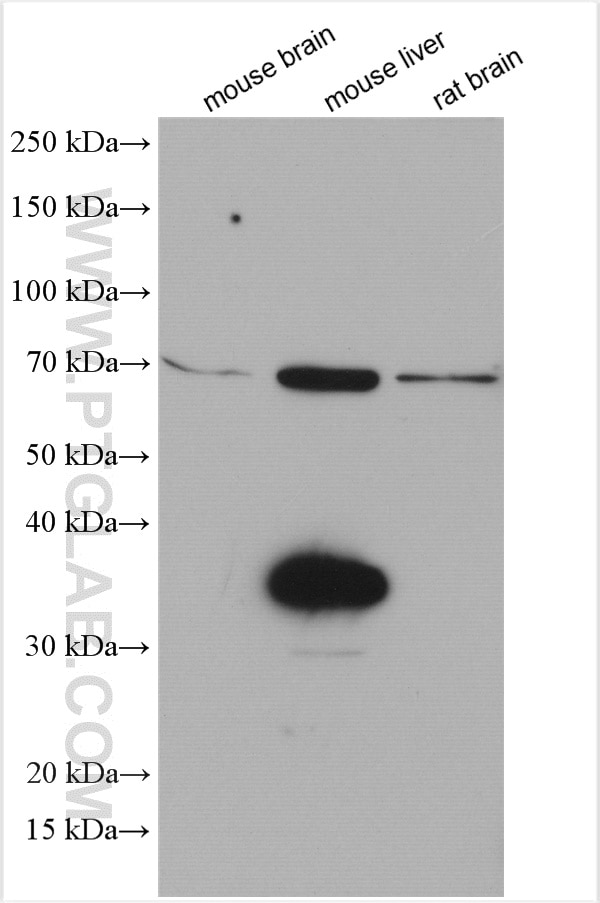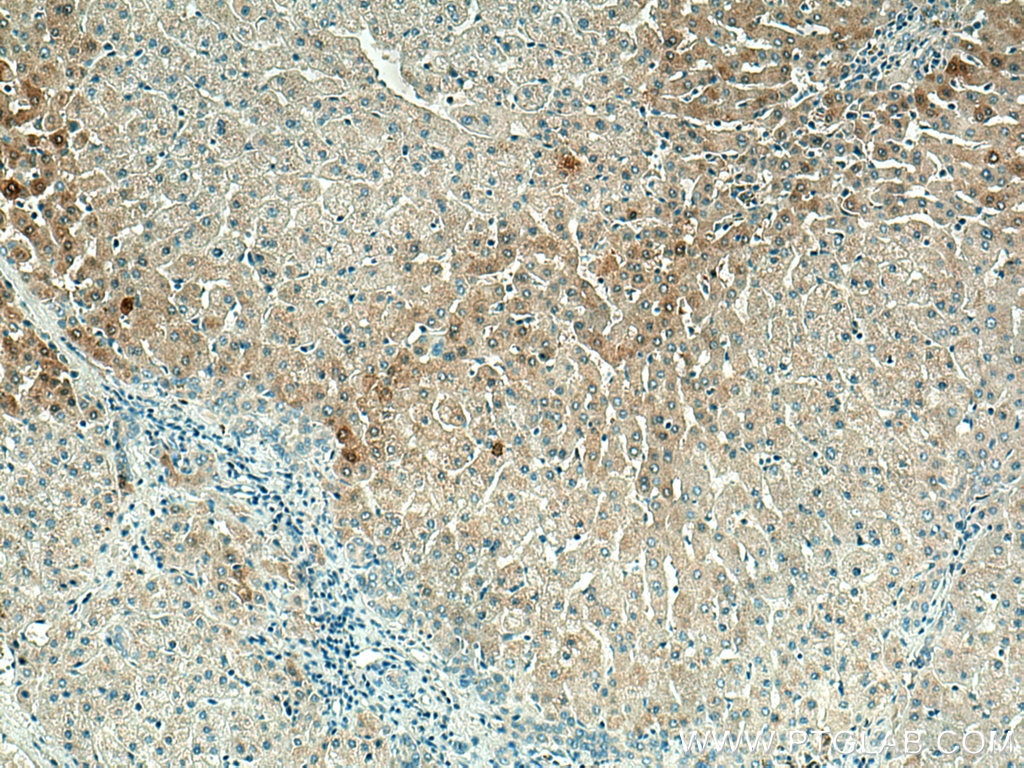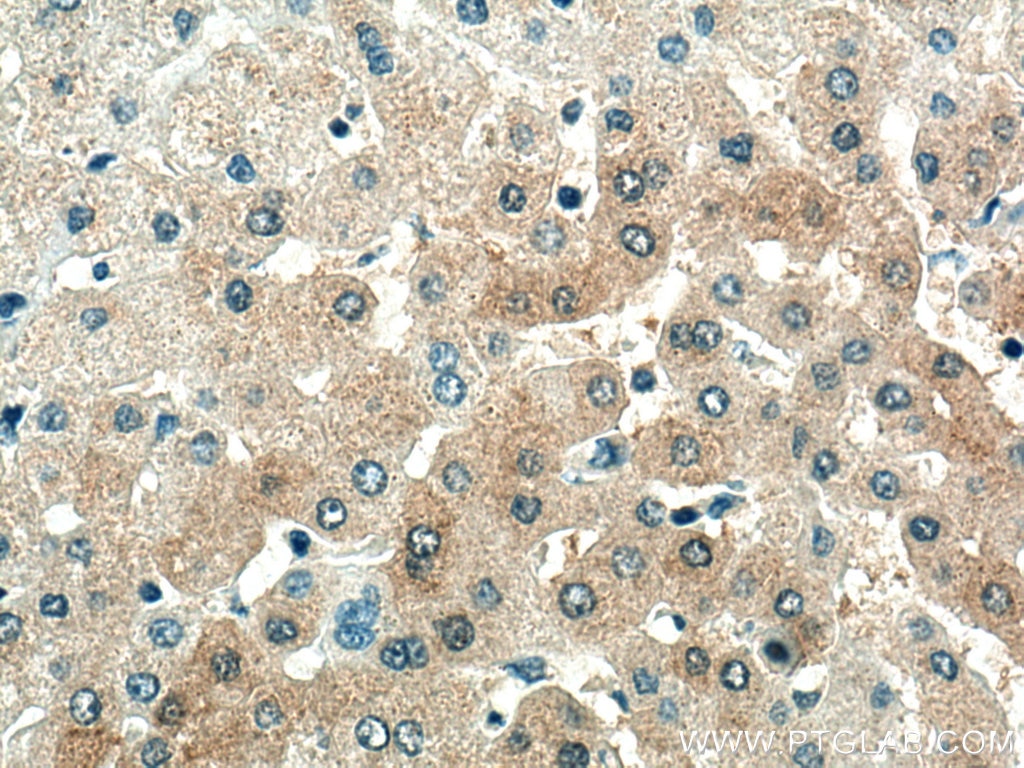Anticorps Polyclonal de lapin anti-SDS
SDS Polyclonal Antibody for WB, IHC, ELISA
Hôte / Isotype
Lapin / IgG
Réactivité testée
Humain, souris
Applications
WB, IHC, ELISA
Conjugaison
Non conjugué
N° de cat : 16594-1-AP
Synonymes
Galerie de données de validation
Applications testées
| Résultats positifs en WB | tissu hépatique de souris, |
| Résultats positifs en IHC | tissu hépatique humain, il est suggéré de démasquer l'antigène avec un tampon de TE buffer pH 9.0; (*) À défaut, 'le démasquage de l'antigène peut être 'effectué avec un tampon citrate pH 6,0. |
Dilution recommandée
| Application | Dilution |
|---|---|
| Western Blot (WB) | WB : 1:1000-1:4000 |
| Immunohistochimie (IHC) | IHC : 1:50-1:500 |
| It is recommended that this reagent should be titrated in each testing system to obtain optimal results. | |
| Sample-dependent, check data in validation data gallery | |
Informations sur le produit
16594-1-AP cible SDS dans les applications de WB, IHC, ELISA et montre une réactivité avec des échantillons Humain, souris
| Réactivité | Humain, souris |
| Hôte / Isotype | Lapin / IgG |
| Clonalité | Polyclonal |
| Type | Anticorps |
| Immunogène | SDS Protéine recombinante Ag9704 |
| Nom complet | serine dehydratase |
| Masse moléculaire calculée | 218 aa, 23 kDa |
| Poids moléculaire observé | 35 kDa; 70 kDa |
| Numéro d’acquisition GenBank | BC020750 |
| Symbole du gène | SDS |
| Identification du gène (NCBI) | 10993 |
| Conjugaison | Non conjugué |
| Forme | Liquide |
| Méthode de purification | Purification par affinité contre l'antigène |
| Tampon de stockage | PBS avec azoture de sodium à 0,02 % et glycérol à 50 % pH 7,3 |
| Conditions de stockage | Stocker à -20°C. Stable pendant un an après l'expédition. L'aliquotage n'est pas nécessaire pour le stockage à -20oC Les 20ul contiennent 0,1% de BSA. |
Informations générales
L-Serine dehydratase (SDS ; SDH) catalyzes the pyridoxal phosphate (PLP) dependent deamination of l-serine to yield pyruvate. In mammals, SDH is found predominantly in the liver. Extensive studies have been carried out on SDH from rat and the enzyme has been found to play an important role in gluconeogenesis; its activity is induced by the consumption of high-protein diets, starvation and other treatments. The enzyme exists as a dimer of identical subunits, with each subunit exhibiting a bilobal architecture. (PMID: 25380533, PMID: 21878319, PMID: 14646100)
Protocole
| Product Specific Protocols | |
|---|---|
| WB protocol for SDS antibody 16594-1-AP | Download protocol |
| IHC protocol for SDS antibody 16594-1-AP | Download protocol |
| Standard Protocols | |
|---|---|
| Click here to view our Standard Protocols |





